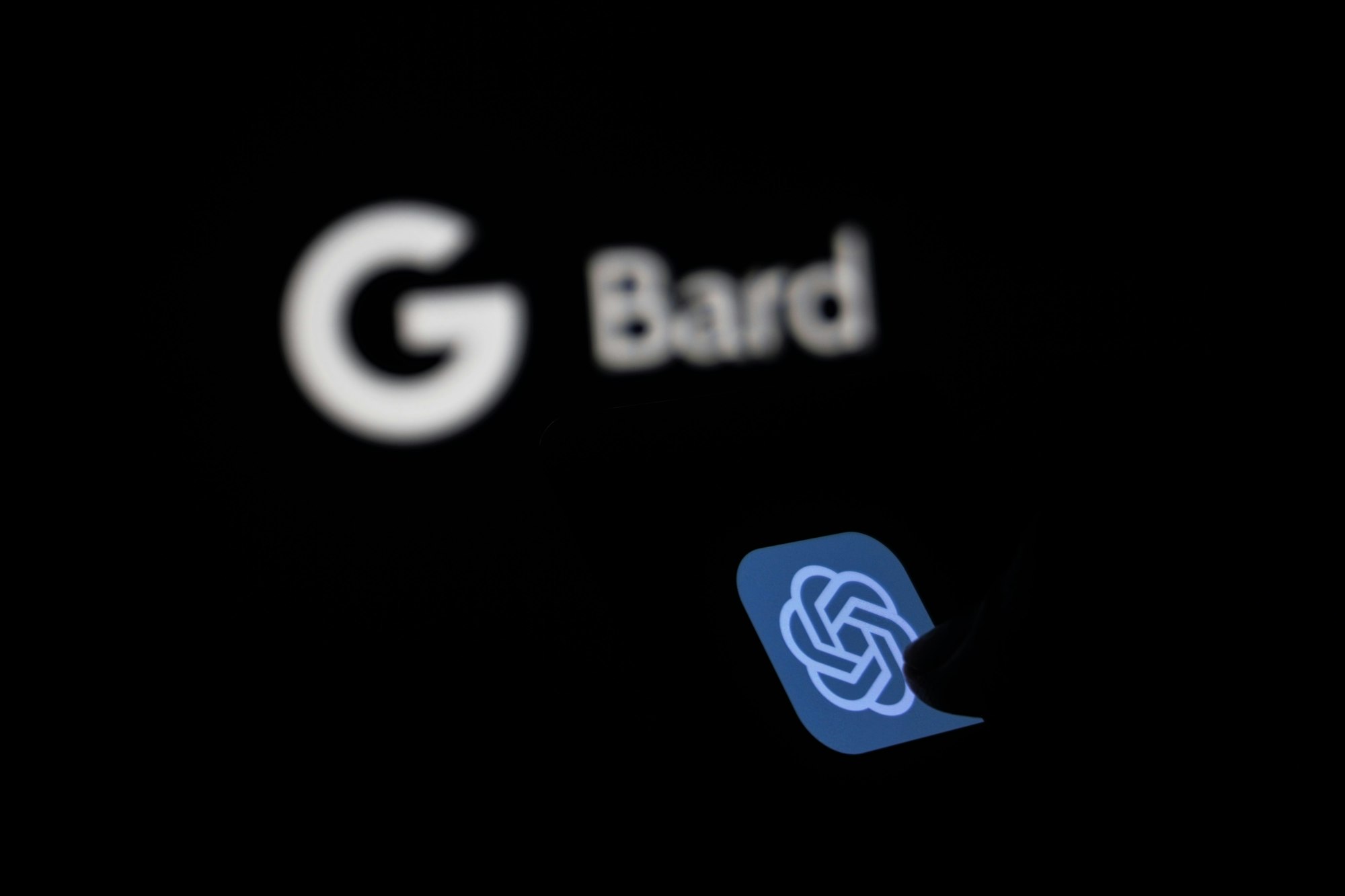Generative AI is no longer a futuristic concept—it's a transformative force reshaping today's most innovative industries. Companies like Klarna and J.P. Morgan are making bold moves by integrating Generative AI into their operations, challenging the status quo and enabling unprecedented efficiency and creativity.
This shift isn't merely an incremental upgrade; it's a paradigm change that allows organizations to automate complex processes, generate creative content, and make data-driven decisions more effectively than ever before.
Yet despite its clear potential, many large companies hesitate, caught in the throes of Clayton Christensen’s "Innovator’s Dilemma."
They are torn between the safety of their profitable legacy systems and the uncertain but promising path of investing in disruptive technologies like Generative AI. For these companies, the risk extends beyond lagging behind competitors; it's the danger of becoming irrelevant in a landscape that rewards agility and punishes complacency.
In today's fast-paced market, comfort zones have become liabilities. Companies that cling to legacy approaches while ignoring the winds of change are playing a dangerous game—one that could end with them being outpaced, outperformed, and ultimately pushed out of the market.
Disruption is relentless: Comfort zones are a liability
Christensen’s "Innovator’s Dilemma" illustrates how companies often lose their edge by focusing on existing products while ignoring larger shifts. Generative AI represents one of these shifts, transforming industries with innovations that enhance efficiency and open new possibilities.
Klarna's recent decision to move away from well-established SaaS platforms like Salesforce and Workday exemplifies this transformation. By developing an internal AI-driven solution, they are not only replicating but surpassing decades of customization and workflow automation offered by industry giants.
This bold move challenges the narrative of SaaS 'stickiness' and highlights how companies that remain in their comfort zones risk being outpaced by more agile competitors.
Consider how Blockbuster, a giant in its heyday, ignored the rise of digital streaming while Netflix evolved from a niche DVD rental service into a streaming powerhouse. Companies that fail to adopt Generative AI today risk a similar fate. Disruptive technologies don't pause for established players—they redefine industries and leave behind those who can't or won't adapt.
Malcolm Gladwell’s "The Tipping Point" emphasizes that transformative shifts often begin subtly, with small, almost unnoticeable changes that eventually reach critical mass.
Many companies entrenched in their comfort zones overlook these initial signs, dismissing them as inconsequential until the tipping point is reached and transformation becomes unavoidable. Finding a balance between existing customer needs and innovation is essential for long-term survival.
Balancing current needs with future vision
While addressing current customer needs is important, it's equally critical for companies to anticipate future market demands. Generative AI technologies often start small, catering to niche markets or solving problems not immediately apparent to mainstream customers.
However, as these technologies evolve, they can redefine entire industries. Gladwell discussed how niche innovations, initially overlooked or even ridiculed, can suddenly become the next big thing when they reach a tipping point, rapidly gaining acceptance and disrupting established markets.
Focusing solely on present needs can leave companies vulnerable when market dynamics shift. To stay competitive, leaders must balance immediate demands with a clear vision for the future, ensuring their strategies include investments in disruptive technologies like Generative AI.
Klarna's pivot to Generative AI illustrates the importance of this balance. While traditional SaaS platforms had been integral to their operations, Klarna recognized the potential of AI to streamline processes and reduce complexity.
By standardizing workflows and leveraging AI, they've created a more agile solution that meets current demands while positioning themselves for future growth. This move underscores Gladwell's point about niche innovations gaining rapid acceptance when they reach a tipping point.
AI implementation: Costs and complexity
Having a vision for Generative AI is only part of the equation; the real test lies in execution, where costs and complexities can become formidable barriers. Implementing Generative AI requires a comprehensive, multi-year strategy.
The expenses associated with AI software, infrastructure, and staff training are significant hurdles that can deter many organizations. According to a 2023 report by McKinsey & Company, companies investing in AI can expect to allocate 20-30% of their IT budgets toward AI initiatives.
Klarna's success wasn't just about adopting new technology; it involved reengineering their tech stack from the ground up and embracing standardization to reduce complexity.
This approach demanded a significant commitment but resulted in a more agile and cost-effective system. Their experience demonstrates that while the barriers to AI implementation are real, they can be overcome with a strategic, long-term vision.
Integrating Generative AI is not just about acquiring technology—it's about embedding it into the organizational DNA and aligning it with strategic business goals. This involves substantial investments not only in technology but also in people and processes, requiring acommitment to long-term change rather than short-term fixes.

Organizations that hesitate because of these initial hurdles risk being left behind as others recognize the potential and reach the tipping point where Generative AI shifts from experimental to essential.
Established organizations often value stability and incremental improvements. Generative AI challenges these norms, requiring businesses to rethink how value is created and delivered. The psychological barrier—the fear of undermining one's own success—can paralyze decision-making and lead companies to stick with what's safe rather than explore new frontiers.
Success amid challenges: J.P. Morgan
Despite these challenges, companies like J.P. Morgan are successfully navigating this complex landscape. J.P. Morgan has launched an AI-powered chatbot for its research analysts, streamlining access to insights and data across the organization.
This initiative reflects a broader strategy to embed Generative AI within the company's operations, enhancing decision-making and fostering a culture of agility and innovation. By taking a proactive approach, J.P. Morgan is not just adopting Generative AI—it's transforming how it does business, setting a blueprint for other companies on how to integrate AI successfully.
While measuring success in Generative AI can be challenging due to the early nature of the technology, the initial benefits are already reshaping business operations. One significant hurdle is establishing clear ROI and KPIs, as many AI projects are still in exploratory stages.
However, a Deloitte survey found that over 50% of early AI adopters reported a positive return on their investment. Leaders need to invest with a long-term vision, understanding that while specific metrics may still be evolving, the transformative impact of AI is increasingly undeniable.
The flexibility of small players: How nimble newcomers are disrupting the status quo
While established companies are adapting, smaller, more agile newcomers are often best positioned to capitalize on Generative AI's potential quickly. Without the burden of legacy systems and entrenched processes, these newcomers can experiment, adapt, and scale AI initiatives more effectively.
Companies like Writesonic and Gamma.app are leveraging Generative AI to reshape industries such as content creation and business communication. They exemplify how agile players can outmaneuver larger, slower competitors.
As Gladwell describes in "The Tipping Point," these innovations can shift from fringe concepts to mainstream essentials, catching larger companies off guard when they reach that critical tipping point.
Klarna's bold strategy doesn't just signify a shift for one company; it poses critical questions for the entire SaaS industry. If AI enables enterprises to replace decades of deep integration with more agile, customized solutions, the traditional 'stickiness' of SaaS platforms is under threat.
This development forces CIOs and IT leaders to reconsider their reliance on established providers and explore the potential of in-house AI-driven solutions. The financial stakes are high, as enterprises could save millions annually by reducing dependence on costly SaaS products.
According to Gartner, organizations can reduce operational costs by 20 - 30% by 2025 through AI-driven efficiencies. Klarna's example may well be the tipping point that accelerates a broader move away from traditional SaaS, emphasizing the urgent need for companies to adapt or risk obsolescence.
Ethical and social considerations
As companies embrace Generative AI, it's crucial to address ethical and social considerations. Issues such as data privacy, security, and algorithmic bias can pose significant risks if not properly managed.
A 2022 survey by PwC revealed that over 55% of consumers are concerned about how companies use their personal data. Implementing robust data governance policies and ethical guidelines is essential to build trust with stakeholders and ensure compliance with regulations like GDPR.
Moreover, the impact of AI on the workforce cannot be ignored. While AI can automate routine tasks, it may also lead to job displacement. Companies should invest in retraining and upskilling employees to work alongside AI technologies, fostering a culture of continuous learning and adaptation.

Taking action: A roadmap for embracing generative AI
To move from theory to practice, companies must take deliberate steps to integrate Generative AI into their operations. Here’s how leaders can begin this transformative journey:
- Gain executive buy-in: Executive-level support is critical for success.
- Conduct an AI readiness assessment: Evaluate your organization's current capabilities, identify gaps, and set clear objectives for AI adoption.
- Develop a strategic AI roadmap: Align AI initiatives with business goals, prioritize use cases, and create a phased implementation plan.
- Start with pilot projects: Implement small-scale AI projects to demonstrate value, set measurable metrics, and iterate based on insights.
- Invest in talent and training: Upskill existing employees, hire specialized talent, and foster a culture of innovation.
- Address ethical and governance considerations: Establish ethical guidelines, implement governance frameworks, and engage stakeholders transparently.
- Leverage partnerships and collaborations: Collaborate with AI vendors, join industry consortia, and engage academic institutions.
- Monitor and measure impact: Set clear KPIs, conduct regular reviews, and scale successful projects.
- Plan for long-term sustainability: Stay informed on AI developments, budget for ongoing investment, and anticipate future needs.
By following this roadmap, companies can navigate the complexities of Generative AI adoption, mitigate risks, and position themselves for long-term success in an increasingly AI-driven world.
The path forward: Embrace generative AI or face extinction
The lessons from the "Innovator’s Dilemma" speak volumes: focusing solely on today's successes without investing in disruptive technologies like Generative AI is a risky bet. AI isn't just another tool; it's a fundamental shift in how businesses operate.
Companies that fully integrate Generative AI into their operations will not only survive but thrive, setting the pace for their industries. In contrast, those who fail to adapt risk meeting the same fate as Blockbuster and BlackBerry—left behind in a world increasingly driven by AI that rewards the bold and punishes the complacent.
Jim Collins, in "Good to Great," emphasizes that truly great companies continuously evolve and align their strategies with the future. Klarna's decision to harness Generative AI reflects this principle, demonstrating proactive leadership and a commitment to innovation.
Their approach serves as a blueprint for other companies: not just to adopt new technology but to redefine their operations and strategies around it. Without such commitment, companies risk stagnation—going from good to gone.
Conclusion
For leaders, the message is simple: adapt, innovate, and lead, or risk becoming a cautionary tale. Klarna and J.P. Morgan's transformations illustrate that the future belongs to those willing to embrace change and leverage disruptive technologies to their advantage. The decision isn't just about adopting new technology; it's about ensuring your company is poised to excel tomorrow.
As Generative AI continues to advance rapidly, the window of opportunity to lead is narrowing. By taking proactive steps—assessing readiness, developing strategic roadmaps, investing in talent, and more—companies can overcome barriers and seize the transformative potential of AI. Embrace the change because Generative AI won't wait, and neither should you. The time to act is now.
References
1. Christensen, C. M. (1997). The innovator's dilemma: When new technologies cause great firms to fail. Harvard Business Review Press.
2. Treiber, M. (2023). Klarna’s bold move: What it means for the future of SaaS in the enterprise. IKANGAI. https://www.ikangai.com/klarnas-bold-move-what-it-means-for-the-future-of-saas-in-the-enterprise/
3. Gladwell, M. (2000). The tipping point: How little things can make a big difference. Little, Brown.
4. McKinsey & Company. (2023). The state of AI in 2023: Generative AI’s breakout year. https://www.mckinsey.com/capabilities/quantumblack/our-insights/the-state-of-ai-in-2023-generative-AIs-breakout-year
5. J.P. Morgan. (2023). J.P. Morgan introduces AI-powered chatbot for research analysts. J.P. Morgan News. https://www.jpmorgan.com
6. Deloitte. (2022). State of AI in the enterprise, 5th edition. Deloitte. https://www.deloitte.com
7. PwC. (2022). Consumer intelligence series: Trusted tech. PwC. https://www.pwc.com
8. Collins, J. (2001). Good to great: Why some companies make the leap... and others don't.
Want access to hundreds of hours of expert talks?
Sign up for our Pro+ membership and watch presentations from some of the world's leading companies in AI.
That's 100+ hours from all of our events in one convenient place.




 Follow us on LinkedIn
Follow us on LinkedIn





